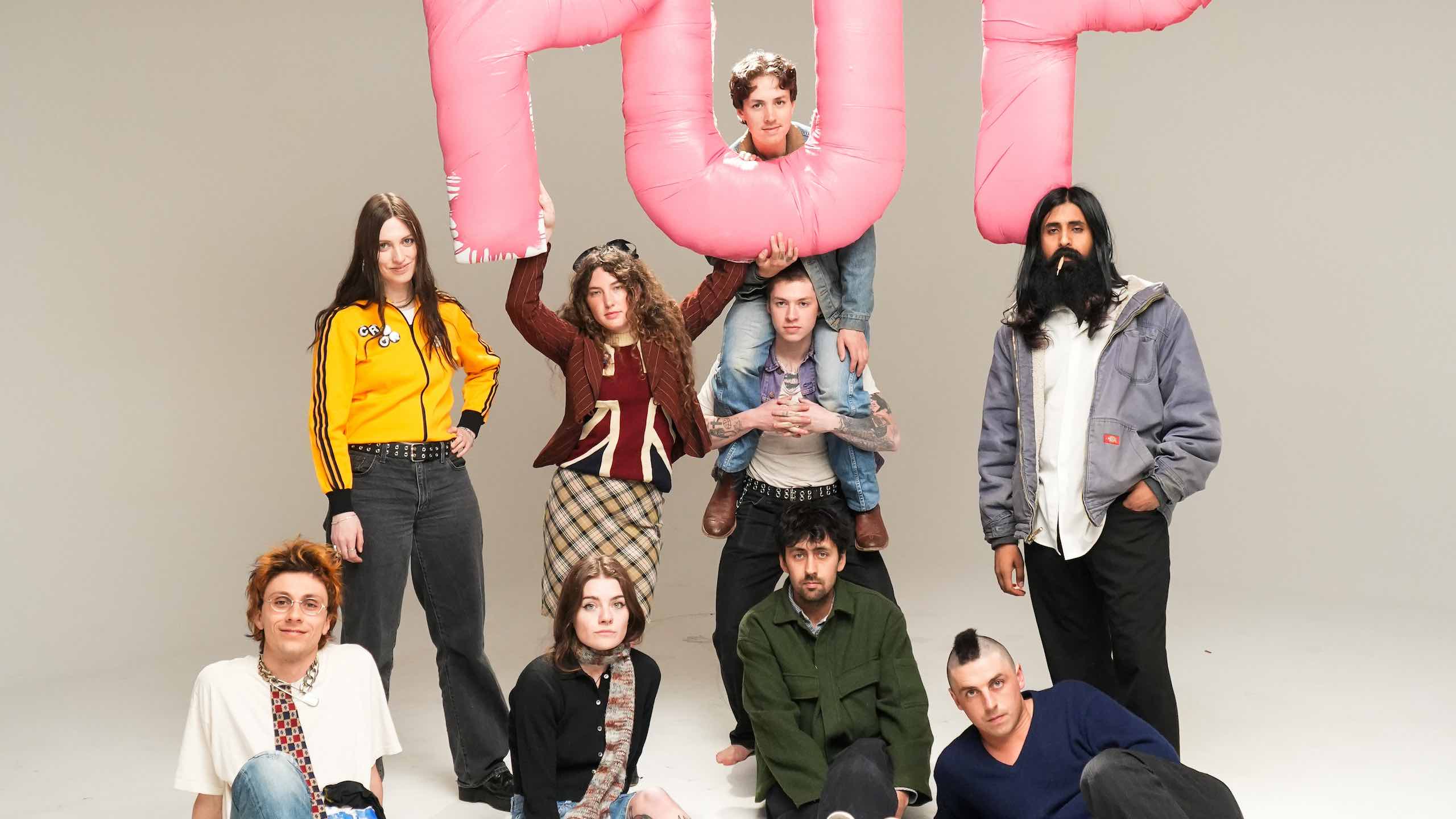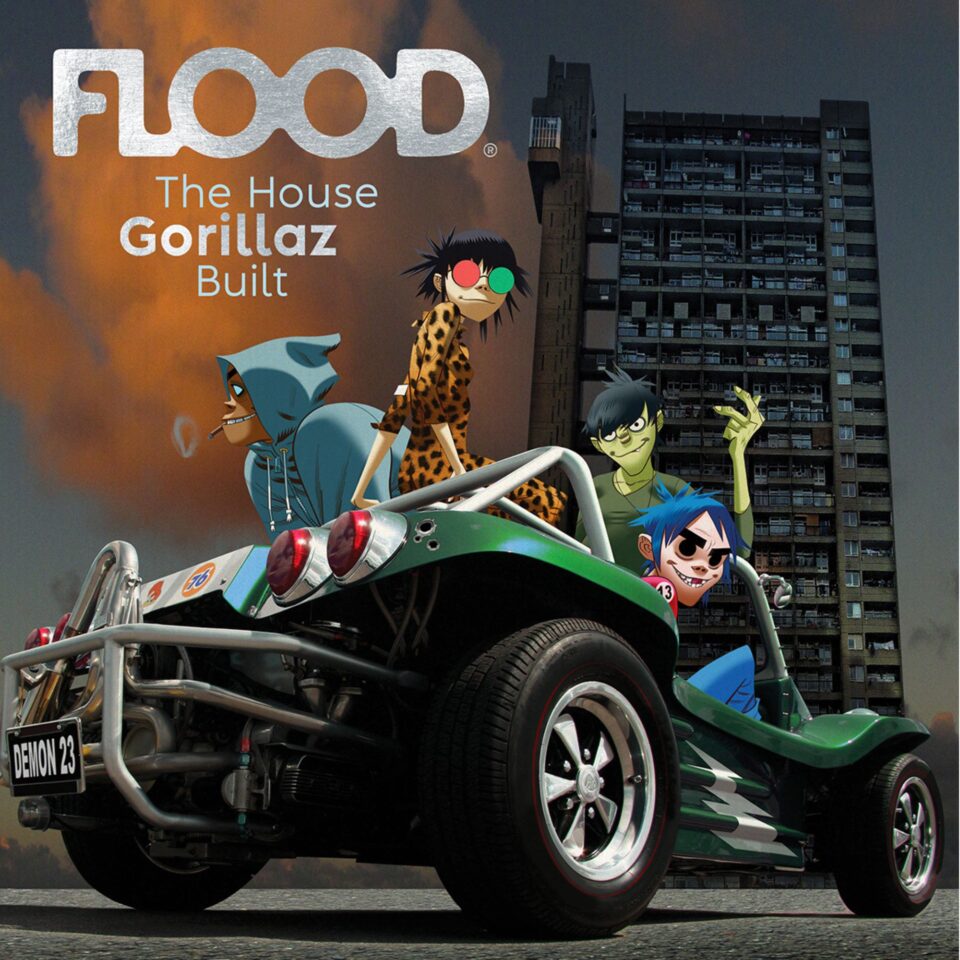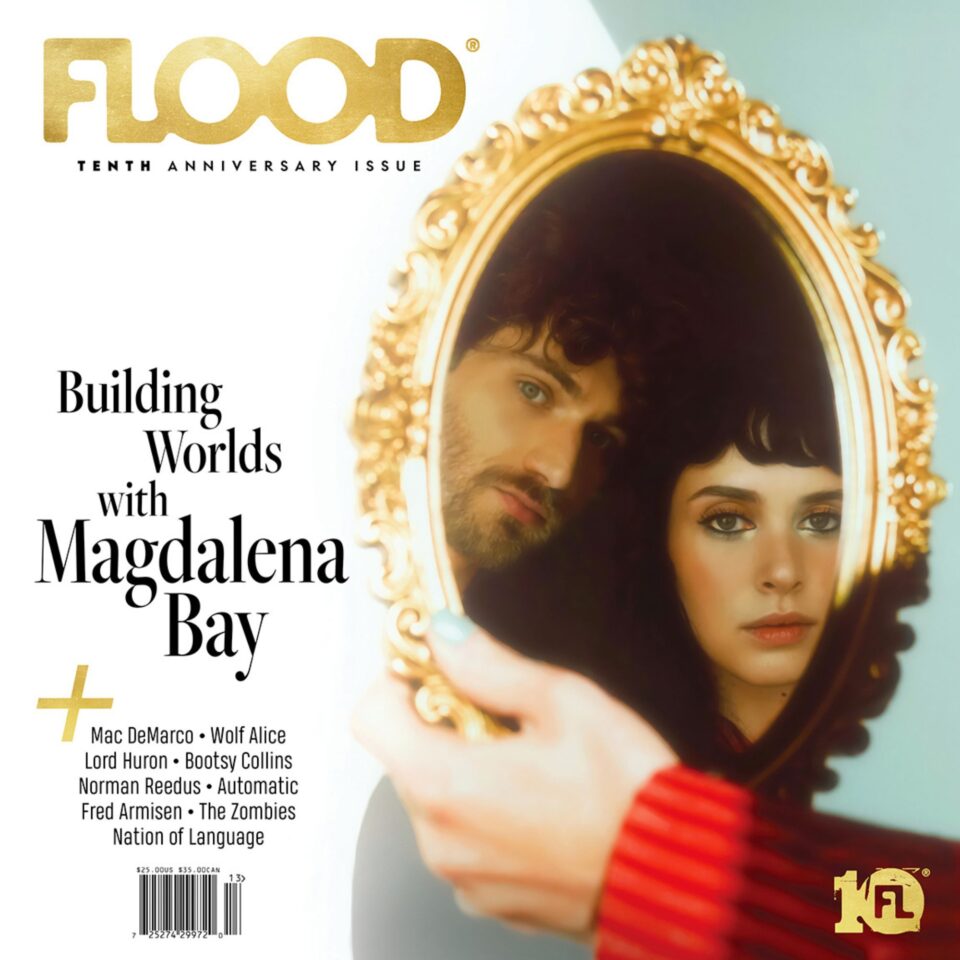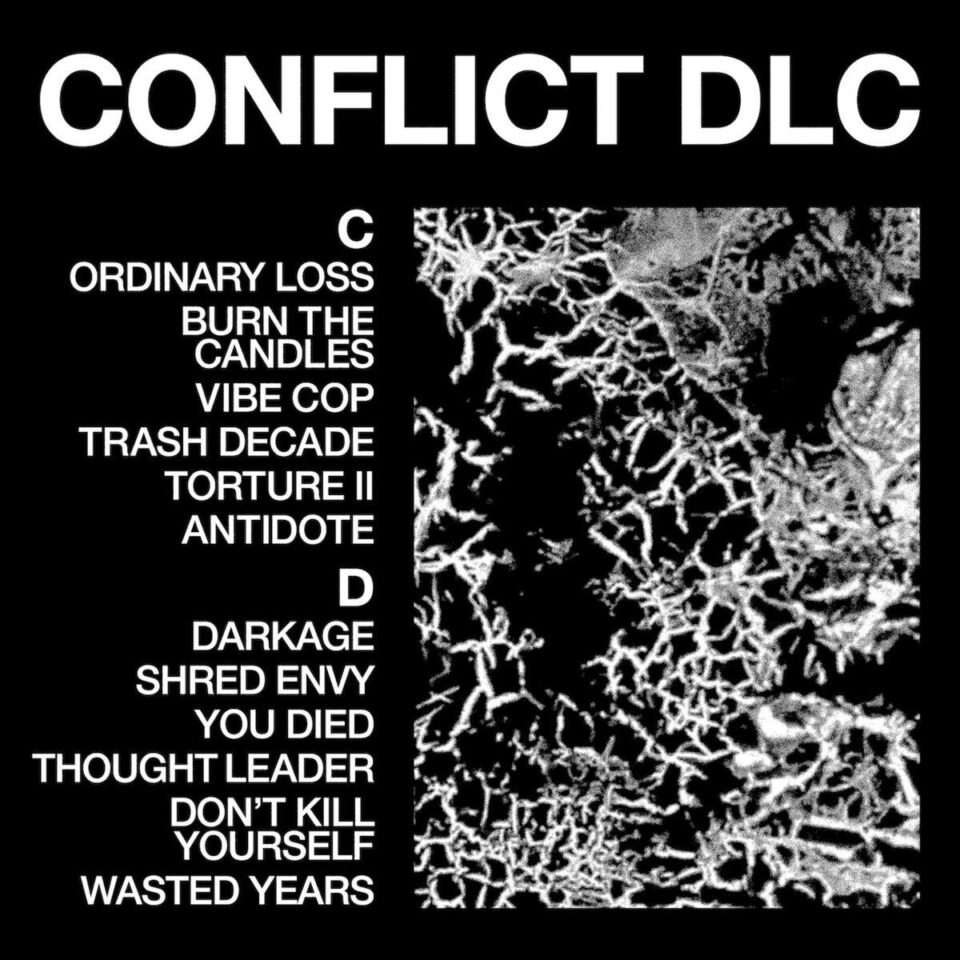Art-rock collective Crack Cloud put the power in communal spirit. Theirs is a band of multiple perspectives, stories, and ideas that coalesce into something thrilling—especially on their newly released third album, Red Mile. Crack Cloud is an unabashed rock band, unafraid to sing about the power of power chords and group choruses. There are, though, serious elements of pop bombast and earworm hooks.
Just listen to pre-album single “The Medium,” which finds the group trading vocals and diving into anthemic breakdowns. Nothing’s off limits for Crack Cloud (there’s even a harpsichord!). Even the string suite that comes in during the song’s last minute—something like the 35th unique idea on the track—works. “Pop music has been a point of fascination for us for some time now,” shares the band’s Zach Choy of the track, “and we took a lot of inspiration from artists that approached the medium in a deconstructive way, while still celebrating the traditionality of it.”
“It is my observation that we repurpose and rearrange past elements of pop culture to always make it seem ‘new,’ as all we have is the past to use as a point of reference,” Choy’s bandmate Aleem Khan adds. It’s precisely this push and pull between cathartic and analytical songwriting that animates the bulk of Red Mile.
To dive further into the project, we asked the band to break down each song on their new album. Check it out and stream along below.
1. “Crack of Life”
Zach Choy: My In-laws attend a Punjabi church service regularly. My wife and I attend on occasion, out of respect. I don’t speak the language enough to understand the oral sermons, but the traditional live music, which is a large component of these gatherings, always resonates deeply with me. Tabla and harmonium are the two instruments used, along with a choir comprised of my mother-in-law and a half dozen others. One Sunday, they sung this two-part melody, and it lived in my mind long enough for me to loosely transcribe it into the basic composition of “Crack of Life.” Lyrically, the song is about reconciling our own humanity in a technologically polarizing world.
Aleem Khan: This song is, to me, about community. Solidarity in the suffering of humanity. The bass tone being influenced by roots music, the group vocals, and the group percussion are all examples of communicating togetherness through sound and production choices. Cultural music is about joining together as a community in love and respect for the experience of life we share as a whole
2. “The Medium”
Zach Choy: When Aleem showcased the first four chords of what was to become “The Medium” for me, it immediately evoked the history of popular music—from Pachelbel’s “Canon” to Vitamin C’s “Graduation.” It got me thinking about the estranged union of Phil Spector and The Ramones; taking something as simple as a black leather jacket and throwing a bunch of glitter on it. Pop music has been a point of fascination for us for some time now, and we took a lot of inspiration from artists that approached the medium in a deconstructive way, while still celebrating the traditionality of it.
Aleem Khan: The chord progression came from the 1950s/1960s era, the beginning of commercial pop music as we know it. There are numerous songs throughout this era up to the present day that utilize the four chords used in the “Medium” progression: middle C major, A minor, F major, G major. The sound of these chords together are what society considers “pop.” From 1960 to 2024, it’s my observation that we repurpose and rearrange past elements of pop culture to always make it seem “new,” as all we have is the past to use as a point of reference.
3. “Blue Kite”
Zach Choy: This one has little-boy energy. Early ’00s adolescent Jackass-era, pick-your-nose, middle-finger energy. But there’s also a humility that’s been channeled, a sort of invocation of youthful naivety planted face to face with the shackles of adulthood. The anarchist voice in the weathered adult brain. We built this one live off the floor, from top to bottom, and it felt so raw and dumb and free. It’s one of my favorite Crack Cloud songs.
Bryce Cloghesy: For me, this song epitomizes the sense of freefall depicted on the album cover, evoking both the grand ambitions of youth and the loneliness of looking back. We built this song on the simplest riff imaginable, indulging in the absurdity of repetition. The strings really sent this one to another level, balancing the bed track’s juvenile delinquency with a sense of mature introspection.
4. “Lack of Lack”
Zach Choy: [This song was] written in lockdown a few years back. We originally debuted this arrangement as a live protest song in Vancouver during a harm reduction rally. It was resurrected for the Red Mile sessions in the Mojave Desert because it felt so elementally connected to our surroundings, and was especially conducive to the live, off-the-floor approach that Bryce continued to drill into us.
Aleem Khan: This song reminds me of the aesthetic from Eyes Wide Shut. It feels like realizing you’re masquerading as a shell of yourself in a world of pain, but truly enjoying it…that is until it fully takes over your autonomy. Thus, we’re exposed to the lack of lack.
5. “Epitaph”
Zach Choy: Aleem’s devotion to pop minimalism was the main proposition for this track’s construction. Its openness also invited a stream-of-consciousness approach to the lyricism. A reoccurring thematic subject on this album is the historical lineage of ideas via its contemporaneous medium. The efficacy of Gilgamesh on a stone tablet, or Goethe committed to print in the 1800s, or Madonna on 20th century vinyl. There’s this extraordinary, shapeshifting tradition called “pop culture” that we’ve subscribed to, and this song is a meditation on that which precedes us, and how it influences creative subjectivity in the 21st century.
6. “I Am (I Was)”
Zach Choy: We didn’t give ourselves a lot of room for self-deprecation on Red Mile, so this was an indulgent exception. This one speaks to the different mechanisms we foster in life to form closure: religion, philosophy, sex, music; escapism.
Bryce Cloghesy: Musically, the specter of MTV looms large over this track, touching on the ’90s radio hits that informed our upbringing. The catchy light-heartedness of the verses is met with an ambiguous, searching bridge. Concerning the lyrics, which seem to question the usefulness of knowledge when facing the present moment, an extended fade out perfectly captures the disorienting confusion and inevitable lack of resolution.
7. “Ballad of Billy”
Will Choy: “Ballad of Billy” is about dead friends, lost lovers, falling off the wagon and getting back on, looking in the mirror and realizing you don’t know you. Inspired by Leonard Cohen’s “Death of a Ladies’ Man.”
Aleem Khan: Most natural full-band production sound on the record, more raw approach of being in the room, getting some ideas and recording something naturally immediately together—less thinking involved than other songs, in a good way. Will came up with this great chord progression that Zach, Bryce, Jared, and I immediately jumped on with our instruments. The vocal overdubs by Isabelle and Emma, as well as the beautiful piano overdubs by Bryce, came after to create a sprawling, large group sound.
8. “Lost on the Red Mile”
Zach Choy: If I had to compress all of the lived experience and the emotional minutiae that went into the production of Red Mile, this song would be the most distilled representation. It was also the most organically conceived, staying true to the original improvised take that was captured. As a thematic bookend, the lyrics come from a place of historical amnesia. The music itself is searching for something. A liminal space that we’ve stepped into, unknowing of what’s to come. And the peace within that.
Aleem Khan: The strings I’d written on the song, as well as the Mellotron parts, were influenced by the arrangements for a short Canadian TV spot I vividly remember seeing as a child briefly describing the habits and habitats of wild animals in Canada. It was called Hinterland: Who’s Who? and was regularly re-ran on Canadian television from 1962 to the early 2000s. In the intro of this spot, there’s a beautiful flute melody with natural ambience in the background. It stuck with me forever since I was a kid simply because of that beautiful melody. The guitar I played on the song, both the rhythm guitar and the solo at the end, is just an extension of my interest in improvisation as an artform in music. Our synergy as a trio created a really strong backbone to place any subtle overdubs we wanted to add.







